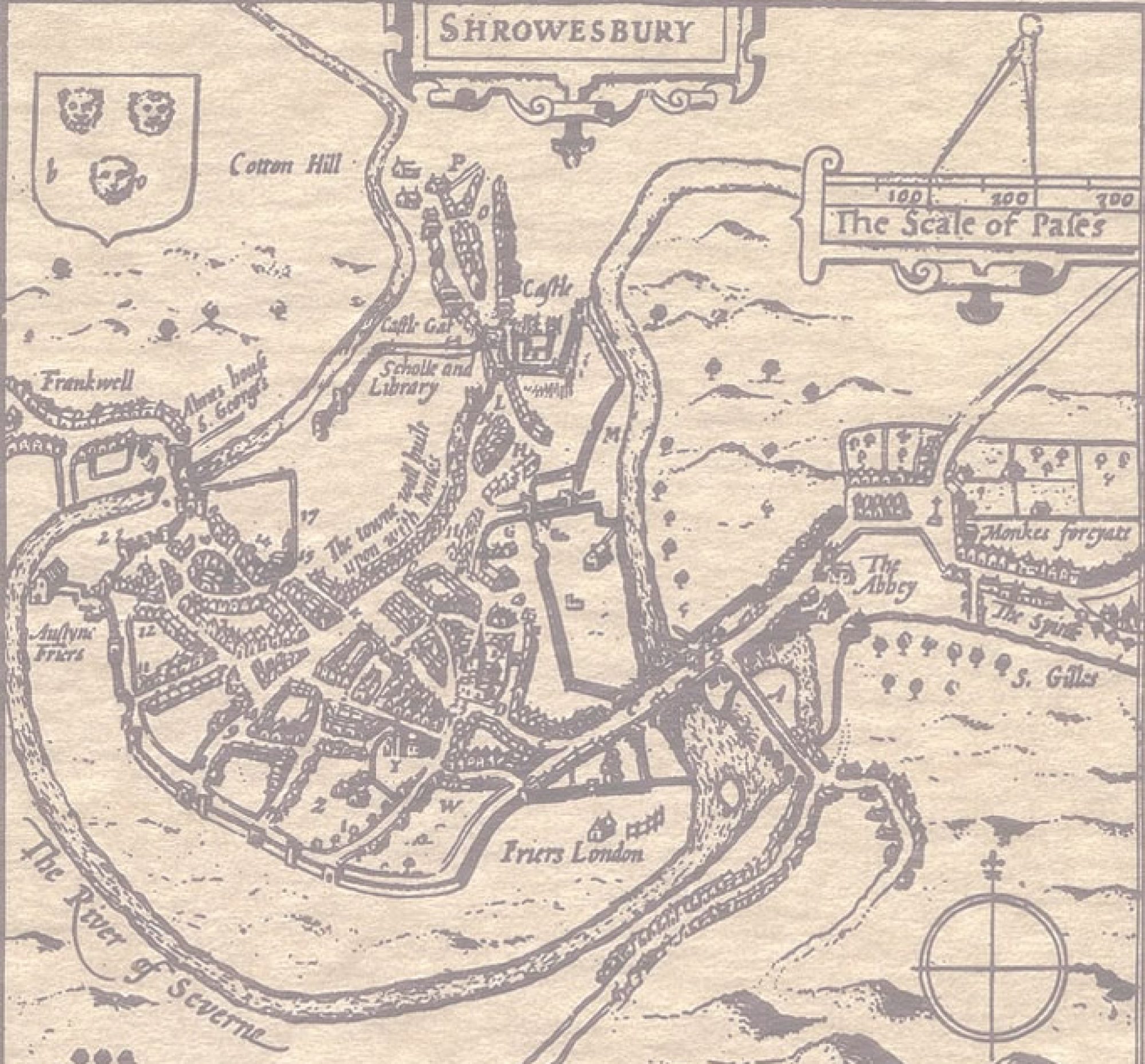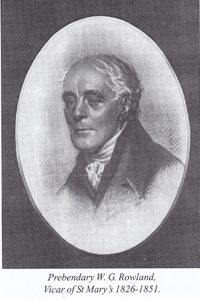
On Sunday June 27th 1824 Henry Pidgeon noted in his diary that ‘divine service was performed at St Giles Church, and the Rev WG Rowland preached from Romans. The congregation in this neglected little temple was numerous and attentive, whilst swallows, oft and loud, sent forth their notes.’ [footnote 1] What made this event worthy of note was that at that time St Giles was only used for services twice a year; it was also in a very dilapidated state, with holes in the roof, through which came the swallows that twittered during the service. [footnote 2]
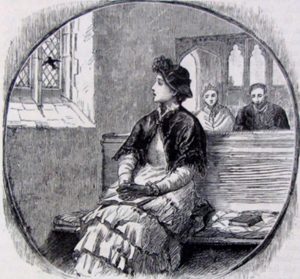
But Rev William Gorsuch Rowland (1770-1851) (after whom Rowland Court on Abbey Foregate is named) had plans to transform St Giles. Rowland had been curate at the Abbey (to which St Giles was attached) since 1793; he had already overseen a number of improvements to the Abbey, and was keen to see St Giles restored and used. It is possibly the oldest church in Shrewsbury, so Rowland, an antiquarian, with a particular interest in stained glass, recognised its architectural importance. [footnote 3] The large congregation that Henry Pidgeon noted also indicated that there was a need for the little church to be fully used.
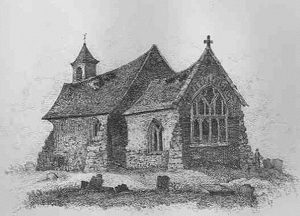
So in August 1826, Pidgeon noted in his diary that, ‘Workmen a few days since commenced lowering the ground on the north, east and west sides of St Giles’s Church to a depth of about five feet under the supervision of Rev Wm Gorsuch Rowland, who informs me that he intends [to fit a] ceiling and repair the interior of the chancel at his own expense.’ [footnote 4] Pidgeon later explained that the reason for lowering the ground was that as a result of ‘frequent interments [burials], the soil had accumulated nearly to the base of the windows on the north side.’ Removing the accumulated debris of ages could be brutal. Writing about what had happened in St Mary’s churchyard in 1824, Pidgeon noted that, ‘one cannot but view with a sort of sympathetic disgust the quantity of human bones which are continually thrown up and scattered around with apparent unconcern…’ [footnote 5]Having removed the soil, drainage could be put in to alleviate the damp, and then the roof was replaced, the floor levelled and repaired, the north wall propped up, and so on. Much of this work was paid for by Rev Rowland, who also donated some stained glass windows; the only one of these that remains is the delightful one illustrating the legend of St Giles.
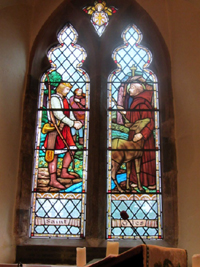
In 1828 Rowland was persuaded to accept the prestigious position of Vicar of St Mary’s. [footnote 6] As with the Abbey and St Giles, Rowland quickly set to work to improve the fabric of the church, and in particular arranged for the insertion of much of the stained glass that is one of the glories of the church. This had been rescued from ecclesiastical buildings on the continent and stored in Lichfield Cathedral, where Rowland had become familiar with it. [footnote 7]
Rowland was much more than just a dry antiquarian. His obituary described him as a ‘true English gentleman’, adding that ‘his conversation on events and customs was peculiarly interesting, interwoven as it generally was with an amusing reminiscence or a lively anecdote’. [footnote 8] He was also deeply concerned for both the practical and spiritual needs of the poor. He was active in the field of education, founding the first Sunday School in Shrewsbury while he was at the Abbey, and supporting the Abbey School (which later became the Shrewsbury National School), near the English Bridge. He also set up the first Savings Bank (Friendly Society) in the town in 1816. Soon after he became Vicar of St Mary’s he realised that few of the congregation came from poor parts of the parish such as Castle Foregate and Ditherington, so he spearheaded the building of St Michael’s Church, which was opened in 1830. Much of the cost was met by Rev Rowland himself, as was that of St Michael’s School, which he set up shortly after the church was opened. He was actively involved in the school, visiting in person twice a day on foot regardless of the weather.
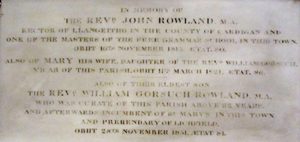
Dying quite suddenly in his 81st year, he was laid to rest in his beloved St Giles, where there are two simple tablets in honour of the family. The first remembers his maternal grandfather, Rev William Gorsuch, who was Vicar of the Abbey for 31 years. The second commemorates William and his father John, who was also a clergyman and also a master at Shrewsbury School. But perhaps William Gorsuch Rowland’s best memorial was his actions. ‘Wherever he found real distress,’ his obituarist wrote, ‘whether from poverty, sickness, or other unavoidable misfortune, his heart was ever gentle and his hand open and willing to afford relief…’
Footnotes
[2] HE Forrest, The Old Churches of Shrewsbury, Shrewsbury, Wildings, 1922, p.43
[3] WT Bryan, St Giles’ Church, Shrewsbury, a Guide and Brief History, 1979, unpaginated
[6] Obituary Salopian Journal, 3,12,1851
